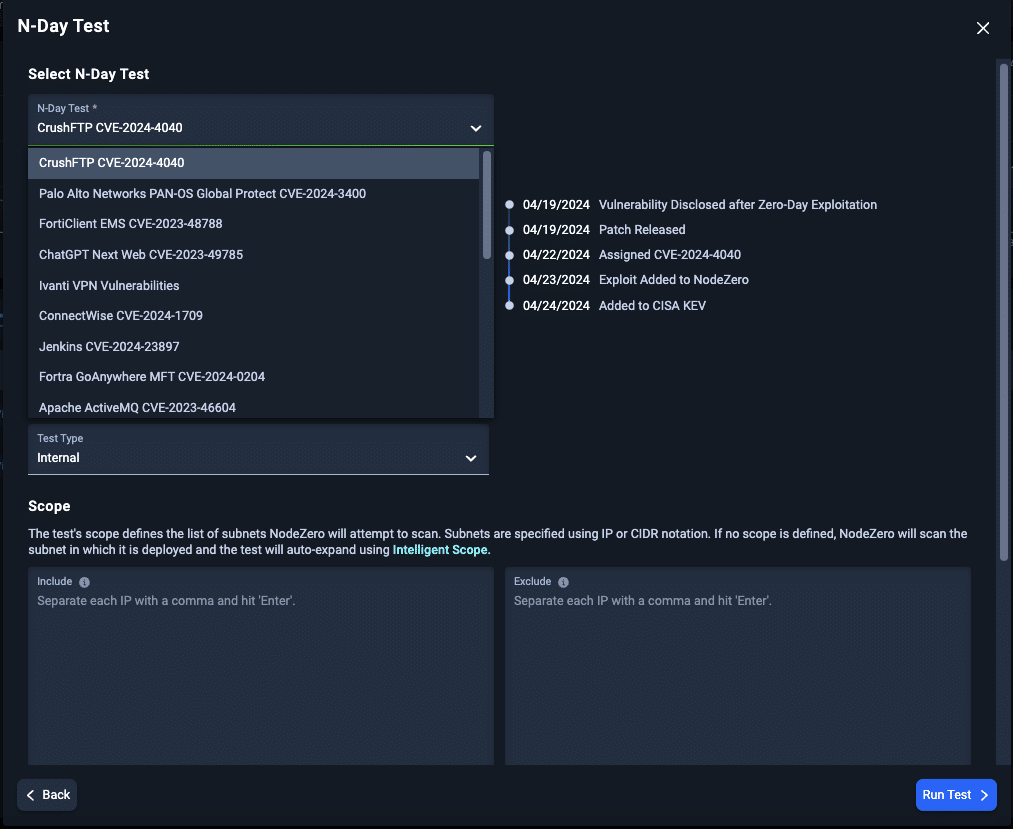CyberAlerts is shutting down on June 30th, 2025. Thank you for your support!
Example Searches:
CVE
Threat Actors
Countries
Vendors
Severity
Known Exploited

|
Description: The Canadian Centre for Cyber Security and the U.S. Federal Bureau of Investigation (FBI) have issued an advisory warning of cyber attacks mounted by the China-linked Salt Typhoon actors to breach major global telecommunications providers as part of a cyber espionage campaign.
The attackers exploited a critical Cisco IOS XE software (CVE-2023-20198, CVSS score: 10.0) to access configuration
CVSS: CRITICAL (10.0)
June 24th, 2025 (13 minutes ago)
|

|
Description: The Canadian Centre for Cyber Security and the FBI confirm that the Chinese state-sponsored 'Salt Typhoon' hacking group is also targeting Canadian telecommunication firms, breaching a telecom provider in February. [...]
June 23rd, 2025 (about 12 hours ago)
|
|
CVE-2024-45208 |
Description: The Versa Director SD-WAN orchestration platform which makes use of Cisco NCS application service. Active and Standby Directors communicate over TCP ports 4566 and 4570 to exchange High Availability (HA) information using a shared password. Affected versions of Versa Director bound to these ports on all interfaces. An attacker that can access the Versa Director could access the NCS service on port 4566 and exploit it to perform unauthorized administrative actions and perform remote code execution. Customers are recommended to follow the hardening guide.
Versa Networks is not aware of any reported instance where this vulnerability was exploited. Proof of concept for this vulnerability has been disclosed by third party security researchers.
CVSS: CRITICAL (9.8) EPSS Score: 0.41%
June 19th, 2025 (5 days ago)
|
|
CVE-2025-20260 |
Description: A vulnerability in the PDF scanning processes of ClamAV could allow an unauthenticated, remote attacker to cause a buffer overflow condition, cause a denial of service (DoS) condition, or execute arbitrary code on an affected device.
This vulnerability exists because memory buffers are allocated incorrectly when PDF files are processed. An attacker could exploit this vulnerability by submitting a crafted PDF file to be scanned by ClamAV on an affected device. A successful exploit could allow the attacker to trigger a buffer overflow, likely resulting in the termination of the ClamAV scanning process and a DoS condition on the affected software. Although unproven, there is also a possibility that an attacker could leverage the buffer overflow to execute arbitrary code with the privileges of the ClamAV process.
CVSS: CRITICAL (9.8) EPSS Score: 0.11% SSVC Exploitation: none
June 18th, 2025 (5 days ago)
|

|
Description: Cisco IOS XE Wireless Controller Software Arbitrary File Upload Vulnerability
CVSS: MEDIUM (6.3) EPSS Score: 0.13%
June 18th, 2025 (5 days ago)
|
|
CVE-2025-20271 |
Description: A vulnerability in the Cisco AnyConnect VPN server of Cisco Meraki MX and Cisco Meraki Z Series Teleworker Gateway devices could allow an unauthenticated, remote attacker to cause a denial of service (DoS) condition in the Cisco AnyConnect service on an affected device.
This vulnerability is due to variable initialization errors when an SSL VPN session is established. An attacker could exploit this vulnerability by sending a sequence of crafted HTTPS requests to an affected device. A successful exploit could allow the attacker to cause the Cisco AnyConnect VPN server to restart, resulting in the failure of all established SSL VPN sessions and forcing remote users to initiate a new VPN connection and re-authenticate. A sustained attack could prevent new SSL VPN connections from being established, effectively making the Cisco AnyConnect VPN service unavailable for all legitimate users.
CVSS: HIGH (8.6) EPSS Score: 0.08%
June 18th, 2025 (5 days ago)
|
|
CVE-2025-20234 |
Description: A vulnerability in Universal Disk Format (UDF) processing of ClamAV could allow an unauthenticated, remote attacker to cause a denial of service (DoS) condition on an affected device.
This vulnerability is due to a memory overread during UDF file scanning. An attacker could exploit this vulnerability by submitting a crafted file containing UDF content to be scanned by ClamAV on an affected device. A successful exploit could allow the attacker to terminate the ClamAV scanning process, resulting in a DoS condition on the affected software.
For a description of this vulnerability, see the .
CVSS: MEDIUM (5.3) EPSS Score: 0.07%
June 18th, 2025 (5 days ago)
|
|
CVE-2025-20271 |
Description:
A vulnerability in the Cisco AnyConnect VPN server of Cisco Meraki MX and Cisco Meraki Z Series Teleworker Gateway devices could allow an unauthenticated, remote attacker to cause a denial of service (DoS) condition in the Cisco AnyConnect service on an affected device.
This vulnerability is due to variable initialization errors when an SSL VPN session is established. An attacker could exploit this vulnerability by sending a sequence of crafted HTTPS requests to an affected device. A successful exploit could allow the attacker to cause the Cisco AnyConnect VPN server to restart, resulting in the failure of all established SSL VPN sessions and forcing remote users to initiate a new VPN connection and re-authenticate. A sustained attack could prevent new SSL VPN connections from being established, effectively making the Cisco AnyConnect VPN service unavailable for all legitimate users.
Cisco has released software updates that address this vulnerability. There are no workarounds that address this vulnerability.
This advisory is available at the following link:https://sec.cloudapps.cisco.com/security/center/content/CiscoSecurityAdvisory/cisco-sa-meraki-mx-vpn-dos-sM5GCfm7
Security Impact Rating: High
CVE: CVE-2025-20271
EPSS Score: 0.08%
June 18th, 2025 (5 days ago)
|
|
CVE-2025-20234 |
Description:
A vulnerability in Universal Disk Format (UDF) processing of ClamAV could allow an unauthenticated, remote attacker to cause a denial of service (DoS) condition on an affected device.
This vulnerability is due to a memory overread during UDF file scanning. An attacker could exploit this vulnerability by submitting a crafted file containing UDF content to be scanned by ClamAV on an affected device. A successful exploit could allow the attacker to terminate the ClamAV scanning process, resulting in a DoS condition on the affected software.
For a description of this vulnerability, see the ClamAV blog.
Cisco has released software updates that address this vulnerability. There are workarounds that address this vulnerability.
This advisory is available at the following link:https://sec.cloudapps.cisco.com/security/center/content/CiscoSecurityAdvisory/cisco-sa-clamav-udf-hmwd9nDy
Security Impact Rating: Medium
CVE: CVE-2025-20234
EPSS Score: 0.07%
June 18th, 2025 (5 days ago)
|

|
Description: Cisco Talos’ Vulnerability Discovery & Research team recently disclosed three zero-day vulnerabilities in catdoc, as well as vulnerabilities in Parallel, NVIDIA and High-Logic FontCreator 15.
June 11th, 2025 (13 days ago)
|
